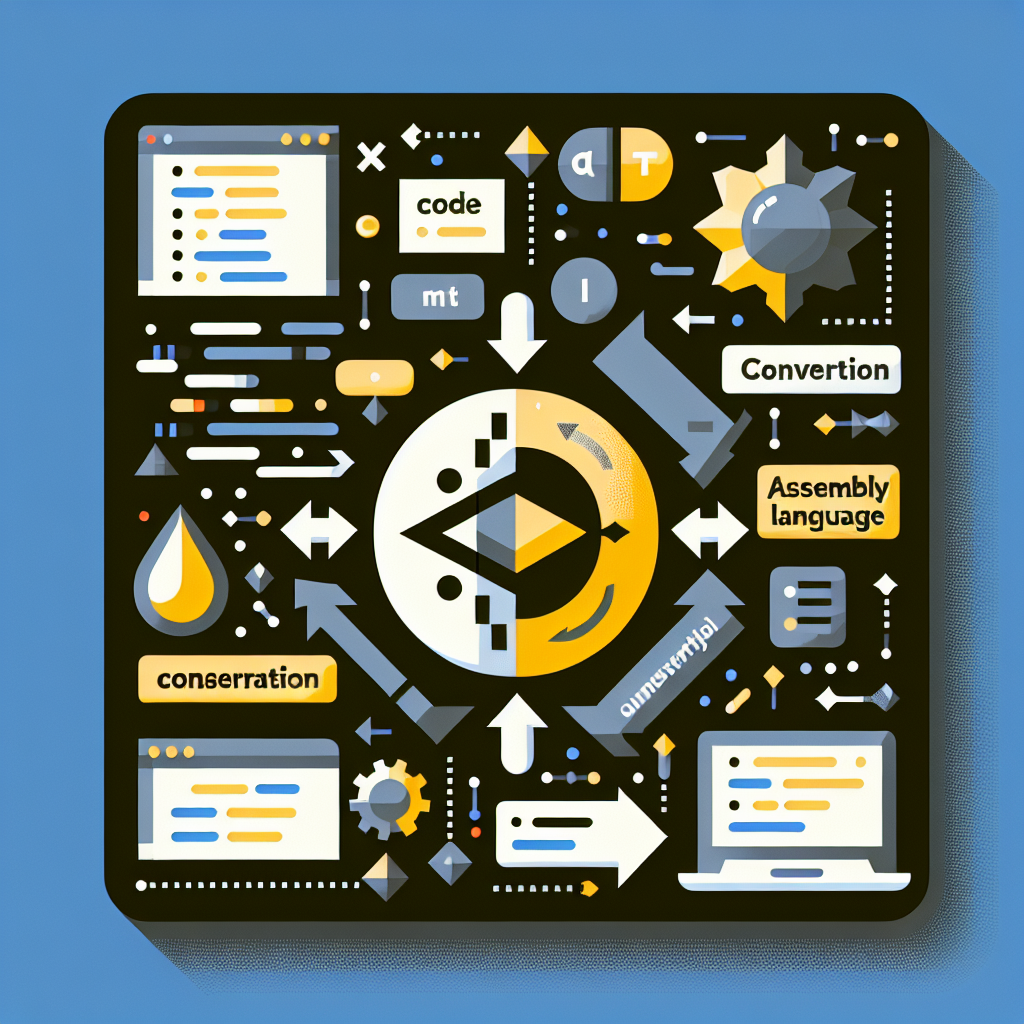Convert Assembly to Dart: Seamless Code Translation Tool
Convert assembly language to Dart effortlessly with our innovative tool. Enhance coding efficiency and streamline development. Try it now for seamless transitions!
Source Code
Converted Code
Output will appear here...
Transform low-level assembly language code into high-level Dart efficiently with our innovative tool. Perfect for developers looking to modernize legacy systems, it simplifies code conversion while enhancing performance and maintainability. Experience seamless integration and accelerate development with this essential tool for bridging the gap between assembly and Dart programming.

Assembly Language to Dart Conversion Tool Link to this section #
Transforming low-level assembly language into high-level Dart code can be complex, but this tool simplifies the process. Designed for developers and engineers, it efficiently bridges the gap between these two programming languages.
Key Features: Link to this section #
- Automated Conversion: Instantly convert assembly language instructions into Dart syntax, streamlining your development workflow.
- Syntax Highlighting: Provides clear differentiation of code elements for easier understanding and debugging.
- Code Optimization: Enhances performance by optimizing the translated Dart code.
Benefits: Link to this section #
- Time-Saving: Eliminates the manual process of rewriting code, reducing potential errors.
- Improved Readability: Converts complex assembly operations into more understandable Dart code, making maintenance easier.
- Cross-Platform Compatibility: Dart’s versatility allows the converted code to be used in various platforms, including web and mobile applications.
Use Cases: Link to this section #
- Embedded Systems: Modernize legacy assembly code for integration with Dart-based IoT applications.
- Educational Purposes: Assist students and educators in understanding the differences and similarities between low-level and high-level programming languages.
Example Conversion: Link to this section #
Assembly:
MOV AX, 1
ADD AX, 2
Dart:
int ax = 1;
ax += 2;
Related Concepts: Link to this section #
- High-Level Language Translation: Dart as a robust choice for developing cross-platform applications.
- Code Abstraction: Simplifying complex operations into manageable code blocks.
For further insights, explore resources such as Dart Programming Language and Assembly Language Basics.
This tool enhances productivity and understanding for developers transitioning between assembly language and Dart, offering a seamless and efficient conversion process.
Frequently Asked Questions
What are the key differences between assembly language and Dart?
Assembly language is a low-level programming language that is closely related to machine code and is specific to a computer's architecture. It provides a way to write instructions that a CPU can execute directly. Dart, on the other hand, is a high-level, object-oriented language primarily used for building web, server, and mobile applications with a focus on ease of development and productivity. Dart abstracts much of the complexity found in lower-level languages like assembly.
Can you convert assembly language directly to Dart?
Directly converting assembly language to Dart is not feasible due to their fundamental differences in abstraction level and purpose. Assembly language is designed for low-level hardware interaction, while Dart is meant for high-level application development. To implement functionality from assembly in Dart, you would typically rewrite the logic using Dart's syntax and libraries, often leveraging Dart's broader ecosystem and abstractions.
Why would someone want to transition from assembly language to Dart?
Transitioning from assembly language to Dart might be beneficial for developers looking to build modern applications with a focus on user interfaces, cross-platform compatibility, and rapid development. Dart, especially when used with the Flutter framework, allows for the creation of highly interactive and visually appealing applications across multiple platforms, which is not easily achievable with assembly language.